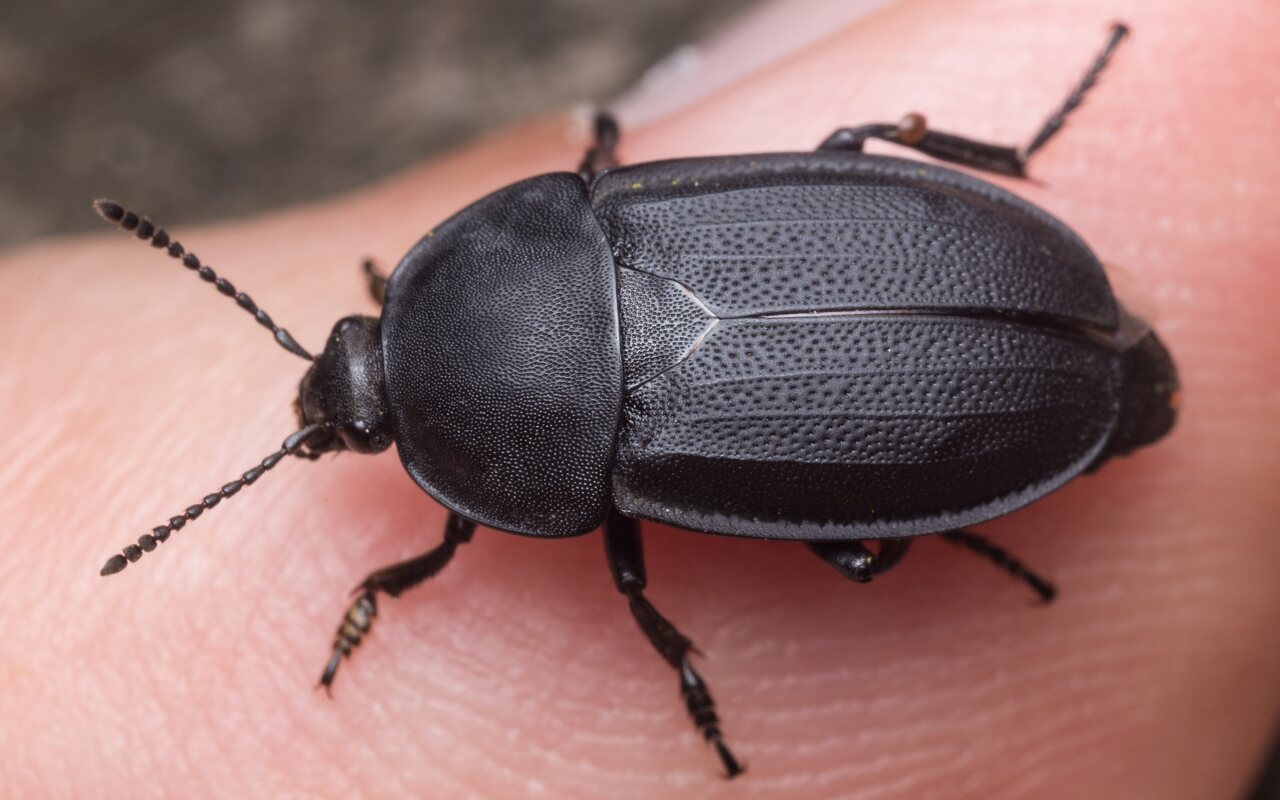
Silpha obscura · maitvabalis
- Obscure Carrion Beetle
- Flachstreifiger Aaskäfer
- hiilihaiskiainen
- omarlica ciemna
- matt asbagge
This species is generally common and often abundant throughout the Palaearctic region, it occurs from lowlands to about 2500m from Spain to Mongolia and western China, extending south through Asia Minor and into India and the Oriental region further east, in Europe it is present on various Mediterranean islands and extends north into all but the most northern parts of Fennoscandia; in northern regions it occurs mostly in lowland and upland regions but in the south extends to the alpine zone.
Adults occur year-round, they overwinter among litter and tussocks or in the soil and are active from March until the autumn, depending upon the season, they generally occur on open grassland or in woodland and are often recorded wandering in the open or among grass roots. Both adults and larvae are predaceous and necrophagous, they generally occur on carrion where the larvae develop rapidly during the warmer months but adults have also been recorded from dung and decaying fungi. Females arrive quickly at fresh carrion and lay large numbers of eggs though this may be determined by the size of the host material; they have been recorded from various rodents. Larvae tend to swarm over the surface, moving rapidly and grabbing any live prey present while also feeding directly on the carcass, they are flattened and elongate with a rounded prothorax which covers the head and broad oblique lobes to the abdominal segments, superficially resembling woodlice, and pale to dark brown in the early stages but shiny black when fully-grown.
13-17mm. Broadly-oval and flattened, glabrous and entirely rather dull black or, rarely, with the elytra obscurely reddish, dorsal surface densely punctured throughout; the forebody more finely so than the elytra. Head elongate with prominent convex eyes, antennae gradually widened towards the apex, segments 1-5 elongate and the eighth about as long as the ninth. Pronotum transverse, broadest towards the base and curved to widely rounded angles, basal margin produced across the middle and apical margin weakly curved between slightly protruding angles, surface finely and densely punctured throughout. Scutellum very large; triangular with a variable lateral angle and punctured as the pronotum. Elytra only very slightly narrower across the base than the width of the pronotal base, evenly curved and strongly bordered laterally to a continuously rounded apical margin, surface evenly and quite strongly punctured between longitudinal ridges, the cuticle smooth between these punctures, keels complete (though attenuating) almost to the elytral apex, the inner keels less strongly raised and defined than the humeral keel. Legs long and slender; tibiae with fine spines or pubescence throughout, middle and hind tibiae with strong spurs at the inner apical angle, front tibiae with a strong spur at the outer apical angle. Tarsi 5-segmented in the male the basal segments of the front and middle tarsi slightly expanded and tomentose ventrally.
‥
0 comments
Add a comment